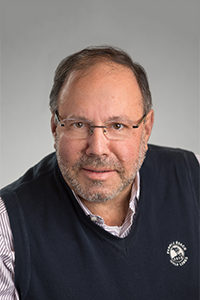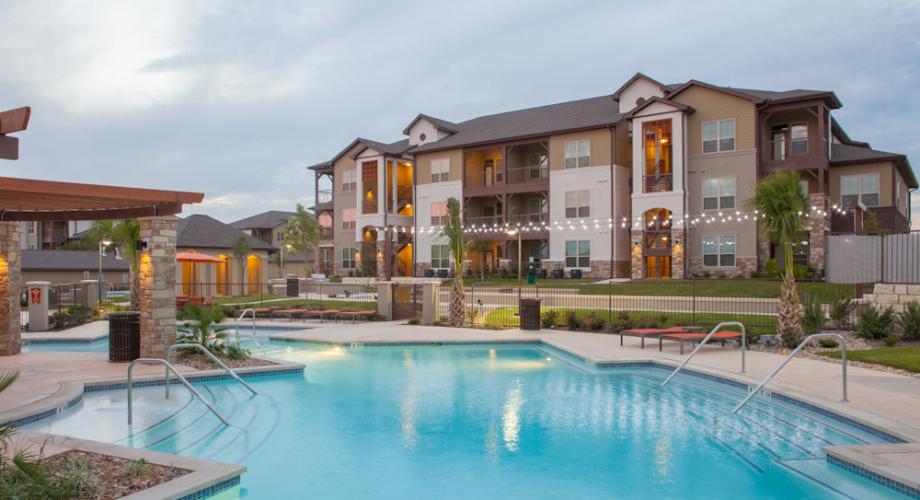In an uncertain environment, one veteran apartment executive is continuing to bet on what he knows—value-add opportunities in the Southeast. Find out how he finds assets in this competitive environment and how the end of the cycle is altering his strategy.
 Joe Lubeck, CEO, American Landmark was buying and renovating Class B apartments before anyone was using the term workforce. As the crucial task of providing affordable housing to America’s workers has grown more important (and gained more attention), Lubeck has been able to turn his passion into a successful business.
Joe Lubeck, CEO, American Landmark was buying and renovating Class B apartments before anyone was using the term workforce. As the crucial task of providing affordable housing to America’s workers has grown more important (and gained more attention), Lubeck has been able to turn his passion into a successful business.
In 1996, he started Landmark Residential, which then evolved into a Landmark Apartment Trust, which grew to 35,000 apartments. The bulk of that company was public (23,000 units) and he sold it to Starwood Capital Group in January 2016 for approximately $2 billion. Some people might have decided to retire and move to a sunnier locale. But the entrepreneurial Lubeck wasn’t ready to hang it up.
In 2015, Lubeck, 60, took his 12,000 units and launched American Landmark, which has grown today to 24,000 units. Last year, American Landmark was ranked No. 14 on Real Capital Analytics’ list of top apartment buyers nationally. He kept the same key people, platform, geography and business model from Landmark Apartment Trust. The company is a large and active player in Lubeck’s core market of North Carolina, South Carolina, Georgia, Florida, and Texas. It focuses on true value-add and opportunistic buys.
“As my wife says, we’re a one-trick pony, but we’ve got that trick down well,” Lubeck says. “We’ve round-tripped more than 150,000 units, we’ve renovated literally 100 percent of those apartments and, of course, we’ve done well economically and financially. But we also are proud of the mission of supplying good, clean, affordable [non-subsidized] housing with good service.”
Lubeck spent some with NAA to talk about the apartment sales market and where he sees it moving in the year ahead.
How much business did you do in 2018?
Lubeck: In 2018, we did about $1.5 billion in acquisitions, but we've also sold $800 million. We’re an opportunistic trader. We look at thigs on a deal-by-deal basis, and we evaluate where we stand with each asset on a regular basis. We both buy and sell into what we think is a reasonably stable market.
How has that market shifted during the past year or so? Has it become difficult to find assets that interest you and have you had to adjust your expectations for return?
Lubeck: That’s the key question. Certainly, it’s a more competitive marketplace than it was five years ago or 10 years ago, and certainly much more than it was when I first went on my own 25 years ago. There are many, many more investors and much more capital in the secondary and tertiary cities. There are many more people who are now value-added experts as well.
As a result, we have become more selective with what we buy. Our expectations have not changed dramatically despite the market being so competitive. We have some competitive advantages because we’ve been doing it so long and have a reputation for closing on time and in accord with our contractual terms. We get a lot of off-market and private label transactions. Probably two-thirds of what we have bought in the past few years has been off-market or has some other situational consideration, such as a seller with a time consideration, a tax consideration or a familial or estate planning consideration.
Still, the market is certainly much more competitive. There are many, many more renovators than there were when I first started. There are also a lot more of the big equity players who used to restrict themselves to the bi-coastal markets that are now finding that Sun Belt and secondary and tertiary value-added properties offer them great risk-adjusted returns.
With that entrance of those guys, has it required a strategy change or are you just simply using your connections that you've built up over the years to find apartments?
Lubeck: We have not changed our strategy. We believe that our strategy in the cities where we have the greatest experience gives us a competitive advantage, and our capital strength and the fact that we’re not entirely reliant on tying up deals and finding equity partners gives us an advantage. That said, we do not participate well in the auction environment that the brokers have managed to develop. We’re not a good bidder in the so-called “best and final types” of scenarios.
How are you making the decision on what to sell and what to hold during today’s competitive, low-cap-rate environment?
Lubeck: We evaluate every transaction based on ourselves and our investors. We have a threshold that we set internally, and whenever we pass that threshold, we’re a seller. Most of what we sell still has meat on the bone and I’ve been accused of selling too early on occasion, but I’ll take that all day long as long as we’re generating solid returns for our investors, who then typically reinvest with us.
Are you selling potentially a little early because you’re concerned you might wait too long?
Lubeck: No. We always feel that when we have accomplished our goals and delivered a solid return to the investors, then it is time to sell. We are more buyers than sellers. My view of the national market is very different than my view of the Sun Belt market, but we still have a lot of confidence in the strength of our sector. We plan on doing another $1 billion to $2 billion in acquisitions this coming year.
Are you planning to become a REIT again?
Lubeck: We are privately held under our current structure. We have been a REIT. That may be a future exit strategy, but we really evaluate it on a market-by-market basis.
There is a lot of talk about this current cycle coming to an end soon and rates increasing. Because of that, are you altering your buying strategies? Are you altering your financing strategies?
Lubeck: Well, the interest rates are certainly a key consideration. We have always assumed that the interest rates of the past few years have been below market, and we don’t base our projections for a property based on the continuation of that scenario. That said, we are certainly more focused on long-term fixed-rate debt.
We believe that even if we go beyond our typical hold time of four to five years, that selling assets with that long-term debt, with what will then be below market interest rates in place, may be an asset. We certainly are focusing more on long-term fixed rate strategies. As far as the cycle, people ask me that question all the time. What inning do you think we’re in?
Yeah. The persistent baseball analogy keeps coming back.
Lubeck: I think we’re in the 18th inning. We're way beyond where the cycles would normally be. But in our markets, we see good reason for that, and frankly, we don’t see that eroding very much during the next few years.
What do I base that on? Well, we look at fundamentals. The fundamentals for success of the value-add sector and workforce housing is based on two things—jobs and population growth. Where there is job growth and where there is population growth, demand will continue for apartments. Within those markets and within our clientele, we also see a continued reduction in their desire to own a home.
Look at Texas. One thousand people move into Texas each day. One thousand people a day are moving to Florida. The job creation is extraordinary in the major markets within those cities and that that tells us that we’re not approaching the end of a cycle -- at least not yet. Will market conditions change? Certainly. We look at interest rates. We look at new product. We look at the supply of equity, but we still feel very confident that there's going to be continued stability in the Sun Belt or smile markets.
